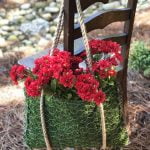Cottage gardens ideas have been popular for centuries, captivating gardeners with their relaxed and charming appeal. From the quaint English countryside to modern urban landscapes, cottage gardens continue to inspire with their unique design elements and abundant plantings. In this article, we will delve into the enchanting world of cottage gardens, exploring their history, key design elements, plant selection, color schemes, seasonal interest, features, maintenance tips, and inspiring ideas.
The charm of a cottage garden lies in its informal layout, overflowing with a mix of perennials, annuals, and biennials that create a natural and wild look. The use of natural materials like stone or wood further enhances the rustic aesthetic. With an emphasis on creating a sense of abundance and spontaneity in planting and design, cottage gardens offer a delightful contrast to more formal styles of gardening.
Whether you’re a seasoned gardener or just beginning your journey into horticulture, there’s something magical about the timeless allure of cottage gardens. Join us as we explore the history and key design elements that define this beloved style of gardening.
Discover how to select the best plants for your own cottage garden oasis and create stunning color schemes that provide year-round visual appeal. Uncover inspiration for incorporating cottage garden features into your outdoor space and gain practical maintenance tips for keeping your garden healthy and thriving throughout the seasons.
Design Elements
When it comes to creating a cottage garden, the design elements are key to achieving that charming and picturesque look. The informal layout is one of the defining characteristics of a cottage garden, as it gives off a relaxed and unstructured feel. This can be achieved by using winding pathways, irregularly shaped flower beds, and mixing different plant varieties throughout the space. By embracing this informal layout, you can create a space that feels natural and inviting.
Another important design element of cottage gardens is abundant plantings. These gardens are known for their lush and overflowing flower beds, filled with a diverse array of plants. To achieve this look in your own cottage garden, consider incorporating a mix of perennials, annuals, and biennials. This will ensure that your garden is bursting with color and texture throughout the growing season.
Natural materials also play a crucial role in the design of a cottage garden. From rustic fences to weathered wood furniture, using natural materials can help enhance the charming and timeless feel of a cottage garden. Consider incorporating elements such as stone paths, wooden trellises, or vintage metal planters to add character to your outdoor space. Embracing these design elements will help you create an enchanting cottage garden that exudes rustic beauty and old-world charm.
- Informal layout
- Abundant plantings
- Natural materials
Plant Selection
When it comes to creating a beautiful cottage garden, the right plant selection is key. Cottage gardens are known for their lush, abundant plantings, and choosing the right mix of perennials, annuals, and biennials can help achieve that charming and whimsical look. When selecting plants for a cottage garden, it’s important to consider factors such as bloom time, growth habit, and overall visual appeal.
Perennials
One of the defining features of a cottage garden is its perennial plants, which come back year after year and provide a sense of continuity and structure to the garden. Some popular choices for cottage gardens include peonies, hollyhocks, delphiniums, and phlox. These plants not only add color and texture to the garden but also attract pollinators like butterflies and bees.
Annuals
In addition to perennials, annual plants play an important role in a cottage garden, providing bursts of color and variety throughout the growing season. Common annuals found in cottage gardens include cosmos, zinnias, sunflowers, and sweet peas. These plants can be used to fill in gaps between perennials or create bold focal points within the garden.
Biennials
Biennial plants are another great option for adding interest to a cottage garden. Plants like foxgloves, sweet William, and Canterbury bells are classic choices for these types of gardens. Biennials add a unique touch with their two-year life cycle: they grow foliage in their first year and then bloom in their second year before setting seed and completing their life cycle.
By carefully selecting a mix of perennials, annuals, and biennials that thrive in a cottage garden setting, you can create a diverse and visually captivating garden that evolves throughout the seasons. With careful planning and thoughtful design choices, your cottage garden will become an enchanting retreat that is sure to delight all who visit it.
Color Schemes
When it comes to creating a beautiful color scheme in a cottage garden, there are several key tips and tricks to keep in mind. By carefully selecting and arranging the right mix of colors, you can achieve a harmonious and cohesive palette that adds to the charm and appeal of your garden space. Here are some ideas for creating stunning color schemes in your cottage garden:
- Consider the overall style: Think about the overall look and feel you want to achieve in your cottage garden. Whether you prefer a soft, romantic palette or bold, vibrant hues, the style of your garden will influence your color choices.
- Use a mix of complementary colors: Incorporate a variety of complementary colors to add interest and depth to your garden. Pairing colors like purple and yellow, or blue and orange can create visually appealing combinations that draw the eye.
- Think about seasonal transitions: Plan for seasonal transitions by incorporating plants with varying bloom times. This will ensure that your cottage garden maintains its colorful display throughout the year.
In addition to these general guidelines, it’s important to consider how different colors will interact within your specific garden space. Take into account factors such as natural light, existing plantings, and any architectural features when planning your color scheme.
Ultimately, creating a beautiful color scheme in a cottage garden is all about balance and creativity. By experimenting with different combinations of plants and considering the visual impact of each color, you can design a stunning palette that transforms your outdoor space into a true retreat.
Seasonal Interest
Cottage gardens are known for their abundant and ever-changing display of colors and textures throughout the year. To ensure year-round interest in a cottage garden, it’s essential to carefully select plants that provide visual appeal in every season. By incorporating a diverse range of plantings, from spring blooms to winter foliage, you can create a dynamic and lively outdoor space that evolves with the changing seasons.
One key strategy for maintaining seasonal interest in a cottage garden is to include a mix of flowering plants, shrubs, and trees that offer visual appeal at different times of the year. For example, early-blooming bulbs like daffodils and tulips can kick off the spring season with vibrant pops of color, while late-blooming perennials such as asters and sedums can extend the blooming period into autumn.
Additionally, evergreen plants like boxwood and holly provide structure and greenery during the winter months when many other plants are dormant.
When planning for seasonal interest in your cottage garden, consider incorporating a variety of plant species that bloom or display unique characteristics during each season. This will ensure that your garden remains visually engaging and attractive throughout the year, providing something new to enjoy with every passing season.
In addition to selecting plants based on their blooming seasons, it’s also important to consider factors such as foliage texture, color changes, and seedpod formations. These elements can contribute to the overall visual interest of the garden even when flowers are not in bloom. By embracing a diverse selection of plants with unique seasonal features, you can create a captivating cottage garden that delights the senses all year long.
| Key Plant Examples | Seasonal Appeal |
|---|---|
| Daffodils | Spring blooms |
| Asters | Autumn blooms |
| Boxwood | Evergreen foliage in winter |
Cottage Garden Features
Creating a stunning cottage garden goes beyond just the plants and flowers. The features and decorative elements within the garden play a crucial role in achieving that charming and whimsical look. Incorporating pathways, arbors, and other decorative elements can elevate the overall aesthetic of a cottage garden and add to its appeal.
Pathways
One signature feature of a cottage garden is the meandering pathways that wind through the lush plantings. These pathways can be made of natural materials such as gravel, stepping stones, or even grass, adding to the informal and rustic feel of the garden. When designing pathways for a cottage garden, consider creating curves and bends to create a sense of discovery as visitors wander through the garden.
Arbors
Arbors are another defining feature of cottage gardens, providing both beauty and function. These structures not only act as support for climbing plants like roses, clematis, or jasmine but also serve as picturesque focal points within the garden. Adding an arbor covered in climbing flowers can create a romantic and enchanting atmosphere in your cottage garden.
Other Decorative Elements
In addition to pathways and arbors, there are countless other decorative elements that can enhance a cottage garden. From vintage or repurposed furniture to bird baths, trellises, or decorative containers, these details add character and charm to the outdoor space. Consider incorporating quaint seating areas where you can relax among the blooms or adding whimsical touches like hanging lanterns or colorful bunting to further evoke that delightful cottage garden aesthetic.
Incorporating these features into your own cottage garden can truly bring it to life and capture the essence of this beloved gardening style. With careful planning and thoughtful selection of these architectural details and decorative elements, you can create a captivating retreat right in your own backyard.
Maintenance Tips
Maintaining a cottage garden is essential to ensure that it remains vibrant and beautiful throughout the seasons. Proper pruning, watering, and pest control are key aspects of upkeep that can help preserve the charm and natural beauty of a cottage garden.
Pruning plays a significant role in maintaining the shape and health of the plants in a cottage garden. Regular pruning helps control the size of plants, encourages healthy growth, and enhances the overall appearance of the garden. It is important to prune dead or damaged branches, as well as any overgrown areas to keep the garden looking tidy and well-maintained.
Watering is another crucial aspect of caring for a cottage garden. While cottage gardens are known for their lush, abundant plantings, it’s important to find the right balance when it comes to watering. Overwatering can lead to root rot and other problems, so it’s essential to water plants deeply but infrequently. Additionally, using mulch around plants can help retain moisture in the soil and reduce evaporation, ultimately minimizing the need for frequent watering.
Pest control is also an important consideration when maintaining a cottage garden. Insects and other pests can wreak havoc on plants if left unchecked. One method of pest control in a cottage garden is to encourage natural predators such as ladybugs or lacewings that feed on destructive insects.
Additionally, practicing good hygiene by removing debris and dead plant material can help prevent pest infestations. If necessary, environmentally friendly pesticides can be used as a last resort to protect the plants in a cottage garden.
Inspiration and Ideas
In conclusion, cottage gardens are a beautiful and timeless addition to any outdoor space. With their charming and rustic appeal, they can bring a touch of natural beauty and tranquility to any garden. By incorporating key design elements such as an informal layout, abundant plantings, and natural materials, it is possible to create a captivating cottage garden that is both visually stunning and easy to maintain.
When it comes to selecting plants for a cottage garden, there are plenty of options to choose from. From colorful perennials to delicate biennials, there is no shortage of plant varieties that thrive in a cottage garden setting. Additionally, creating a beautiful color scheme and ensuring year-round interest with seasonal plants are essential aspects of designing a cottage garden.
For those looking for inspiration and ideas on how to incorporate cottage garden style into their own outdoor space, there are countless examples and photos available. Whether it’s incorporating pathways, arbors or other decorative elements into the design, there are endless possibilities for creating a charming cottage garden atmosphere.
By exploring different features and maintenance tips, anyone can bring the beauty of a cottage garden into their own backyard. With these tips and ideas in mind, creating a charming and vibrant cottage garden is well within reach for any gardening enthusiast.
Frequently Asked Questions
What Makes a Cottage Style Garden?
A cottage style garden is characterized by its informal, romantic, and colorful nature. It often includes a mix of traditional English flowers, herbs, and ornamental plants to create a relaxed and charming atmosphere.
How Do You Start a Cottage Garden From Scratch?
Starting a cottage garden from scratch involves careful planning and consideration of the layout, plant selection, and maintenance. Begin by preparing the soil, selecting a variety of cottage-style plants such as roses, lavender, and daisies, and creating pathways or borders for added charm.
What Vegetables Are Good for Cottage Gardens?
Many vegetables can be incorporated into a cottage garden to add both beauty and functionality. Some good options for cottage gardens include heirloom tomatoes, rainbow chard, zucchini, cucumbers, and various herbs like basil and thyme. These vegetables can add visual interest while also providing fresh produce for the kitchen.

Welcome to my gardening blog! I am passionate about plants and enjoy sharing my knowledge and experiences with others. In this blog, I will write about everything related to gardening, from tips on how to get started to updates on my own garden projects.





